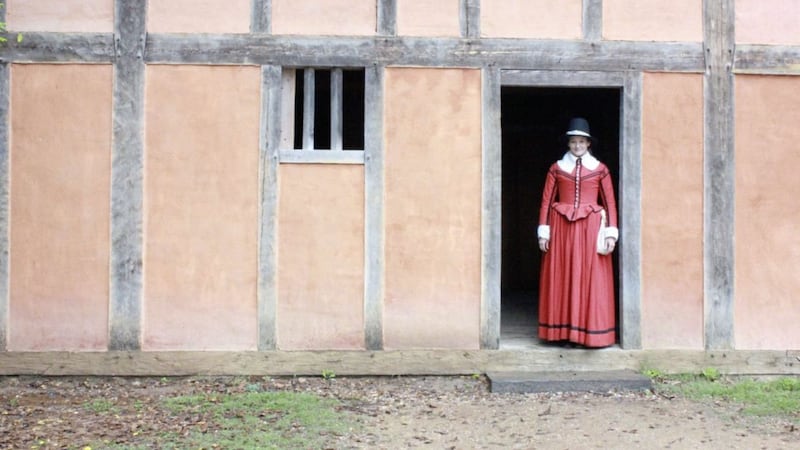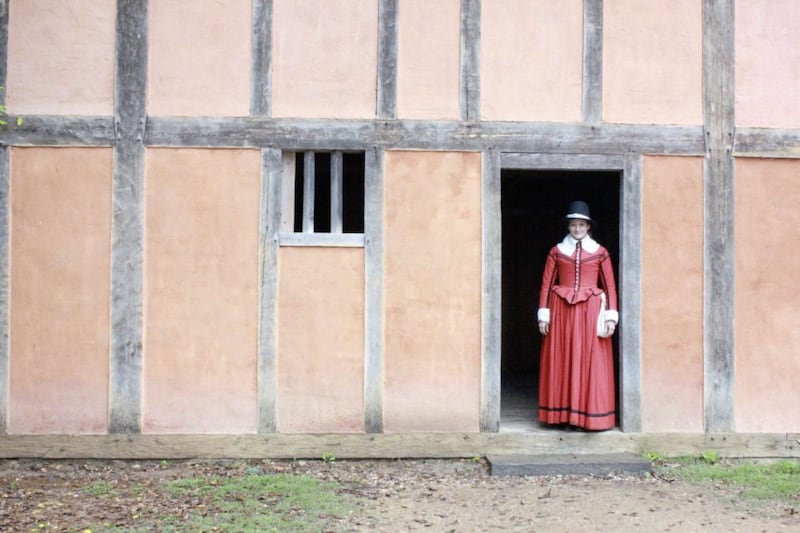IF YOU'VE ever fidgeted on an eight-hour flight over the Atlantic, complaining about the film choice or the lack of legroom, spare a thought for passengers who crossed the pond in the early 1600s.
Lying on a lumpy straw mattress (if you can even call it that) in a tiny hardwood berth on the gloomy lower deck of the Susan Constant, a recreation of a ship that made that very voyage, I get a tiny taste of just how arduous that journey to Virginia must have been – and it lasted five MONTHS.
That's the trip 40 women undertook in 1619, as part of a scheme to entice the original colony of 104 English men and boys who had landed 12 years previously to stay in their new home in Virginia, and it's also the basis for Sky's new drama series Jamestown, which envisions the lives of three of these so-called maids for wives.
"We wanted to focus on the idea that these ambitious and bold people from this small island take a great risk with their lives, by spending months on a ship crossing the ocean, until they land in a place where their future is theirs and anything is possible," explains executive producer Gareth Neame. "We wanted to capture that idea of the western, the frontier, but with this unique angle that it is about the original English people who made that journey."
A three-hour drive south of Washington DC, America's first permanent English colony has been brought to life as part of the Jamestown Settlement visitor attraction, a museum and outdoor living history site that bears a strong resemblance to the series' set.
While reclining in my rock-hard bunk of the Susan Constant, which is moored alongside two other full-size replica ships, I learn about the different techniques sailors used to navigate the choppy seas, long before the days of GPS and Google Maps.
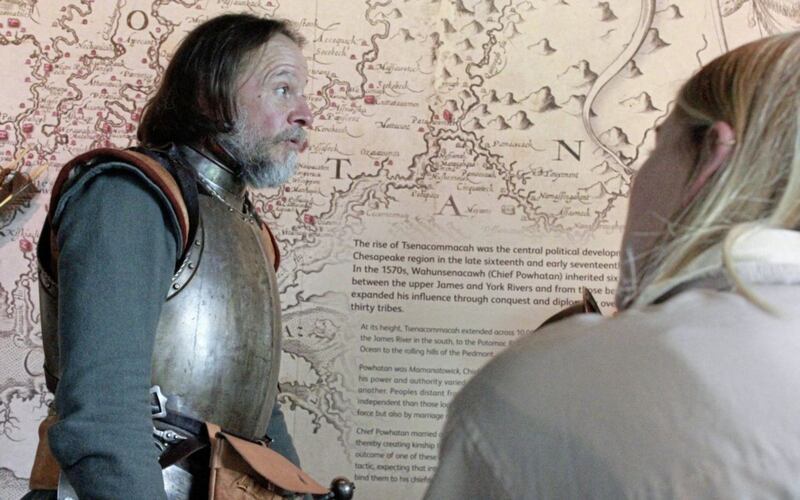
Disembarking the vessel, I head inland and duck into a wheat-coloured 'yehakin'.
Constructed from saplings and cane reeds with a fire pit in the middle and a smoke hole at the top, these cosy tents are part of the Powhatan Indian Village, a reimagining of the dwellings of Virginia's original inhabitants.
Every day really is a school day at the Settlement, and on my visit, I'm given a quick summary of canoe-making (fell a tree and gradually burn out a big hole in the trunk) and try my hand at crafting a 17th century saucepan by smoothing loops of red clay, one on top of the other, to build up the sides of the pot (a delightfully soothing activity).
It's lots of fun, but serious history buffs should make a beeline for the Historic Jamestowne visitor centre, a five-minute drive away, which is where the landings happened.
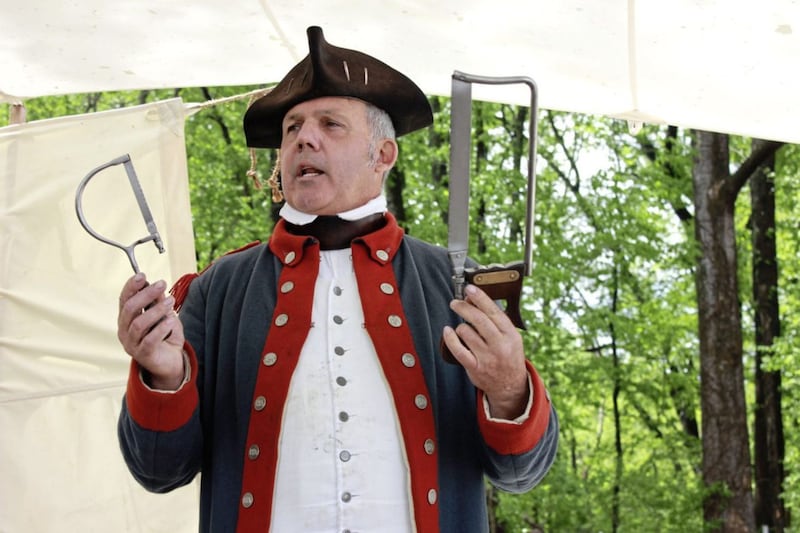
The English settlers, convinced there was gold in them there hills, chose to dock on the grassy banks of the wide, muddy-brown James River, because the waterway provided a gateway to the hinterland.
Most of the early colonies didn't survive, and Jamestown almost didn't. Facing war with the nearby Powhatan tribe, lack of provisions and, eventually, starvation, within two years the dwindling population resorted to cannibalism, as evidenced by the skull of 'Jane,' which is marked in such a way that suggests her fellow Jamestonians were attempting to crack open her skull and eat her brain (only after she had perished, though).
Archaeologists have been digging here for more than 20 years and they're still making astonishing discoveries as they uncover layer upon layer of jettisoned household objects that have been compounded since the earliest settlements.
You can see many of them in the site's Archaearium Museum (entry is included with your Historic Jamestowne ticket) and you can watch the archaeology team at work outdoors or, if it's raining, inside the reconstructed church. If you can, book the fascinating tour that runs every two weeks and takes you behind the scenes to see how they treat and store their finds.
As well as ye olde cutlery, crockery and weapons, a batch of perfectly preserved yeast was recently unearthed, and is now being used to brew a 400-year-old beer (so to speak). The amber harvest should be ready by 2019.
To try to escape the mosquito-ridden swamplands where malaria was rife, the settlers decamped in 1699 to Williamsburg (about 20km away), which became the thriving capital of the colony. Along with Yorktown, the three towns form the corners of Virginia's Historic Triangle.
A far cry from the squalid conditions the early emigrants faced, the Governor's Palace at Colonial Williamsburg was home to Lord and Lady Dunmore and their six children for three years from 1772. The ornately decorated mansion represented the height of 18th century luxury, and is now open to the public, the rooms decorated as Lady Dunmore decreed nearly 250 years ago.
Burgundy damask walls, pink chintz four-poster beds and the cerulean-walled ballroom are impressive, even by today's standards.
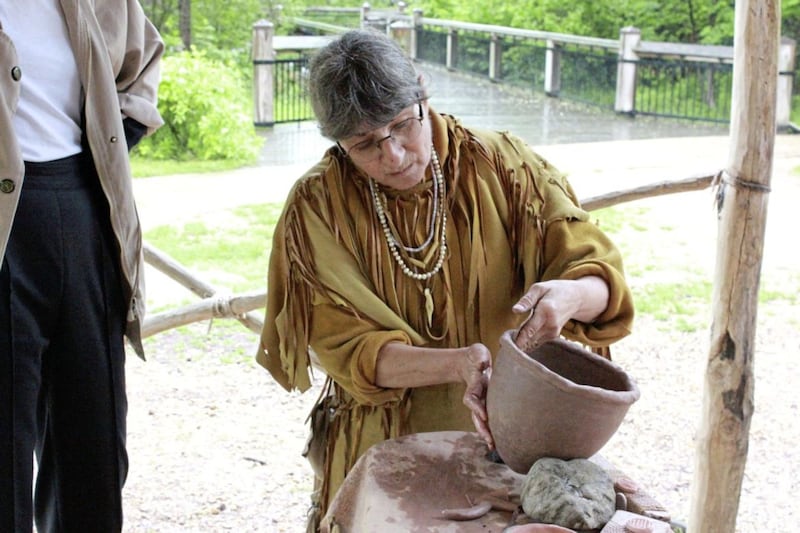
As I explore, volunteers in period dress appear sporadically to talk about their roles in the household. Out by the vegetable patch, the friendly gardener lets me use a hollowed-out gourd to water some sprouting lettuce seeds.
The Dunmores fled to England in 1765 because they no longer felt safe in America.
Revolution was brewing, a fact I'm reminded of when I tell an in-character shopkeeper that I'm visiting from London and he responds by saying he hopes I "hold no allegiance to the Crown".
My knowledge of the birth of America is rusty (to say the least) but all becomes clear when I visit the American Revolution Museum at Yorktown, which opened just a couple of months ago. Far from fusty, the expansive site encompasses more than just dull dioramas and cabinets stuffed with dusty artefacts.
I've barely got through the door before I'm trying on a cream French soldier's jacket (tres chic it is, too), and I'm treated to a screening at the 4D cinema (meaning sights, sounds and even smells) depicting the crucial Siege at Yorktown victory in 1781.
A member of the revolutionary medical corps talks me through some excruciating battlefield treatments (amputation without anaesthesia anyone?) and every so often I jump as a musket fires in the distance.
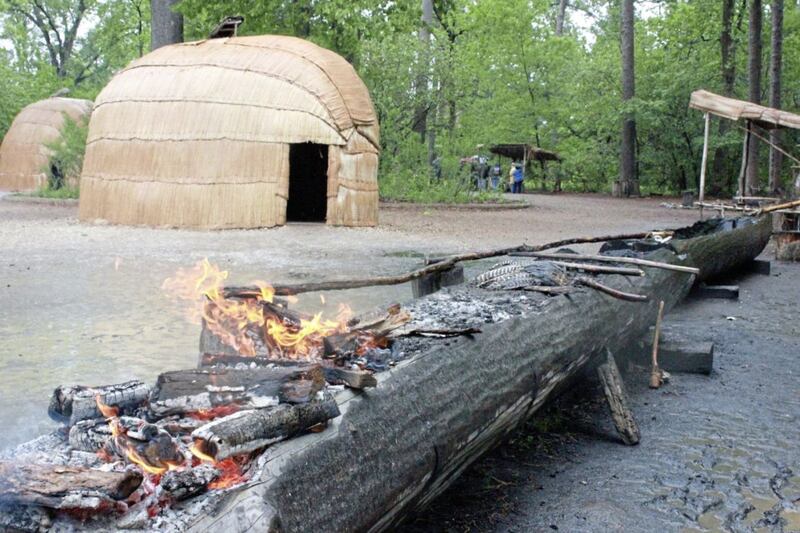
The museum makes learning fun, a theme which runs throughout my trip, but it also gives me a new-found respect for how hard life must have been in those days, let alone in the early 17th century when those brave brides-to-be were stepping on to the shores of a New World – and a new life. It's a fascinating period to explore and experience from their viewpoint, but one thing's for sure – I won't be taking the boat home.
TRAVEL FACTS
:: Katie Wright was a guest of the Virginia tourist board. For more information on Virginia, visit www.virginia.org
:: A visit to Jamestown Settlement costs $17 (about £13); www.historyisfun.org
:: Historic Jamestowne visitor centre is $14 for adults (about £11)
:: Jamestown is on Fridays at 9pm, on Sky 1 and NOW TV
